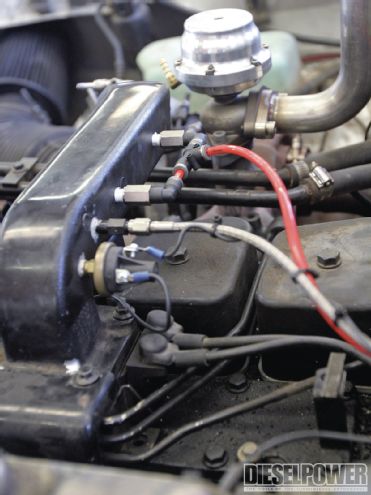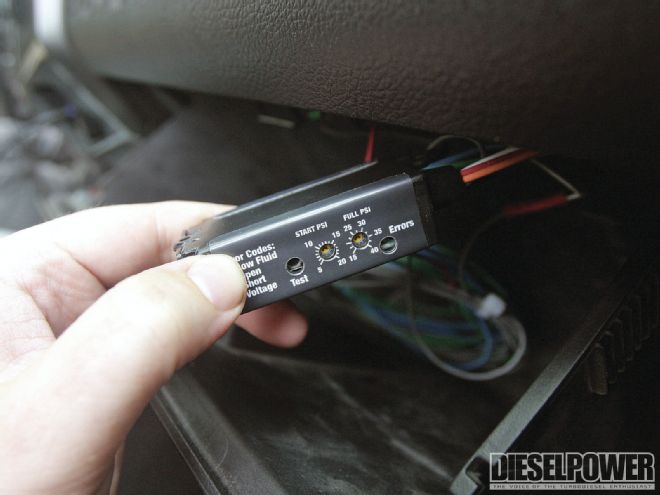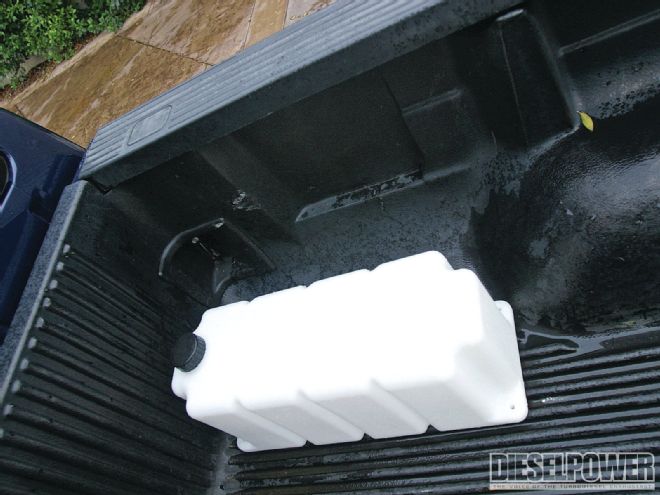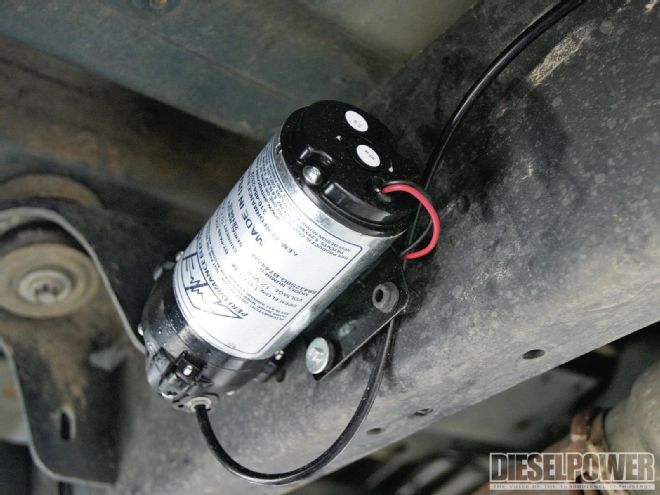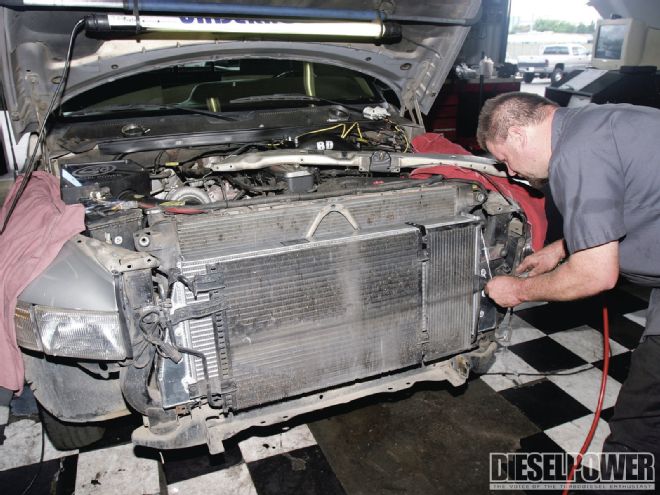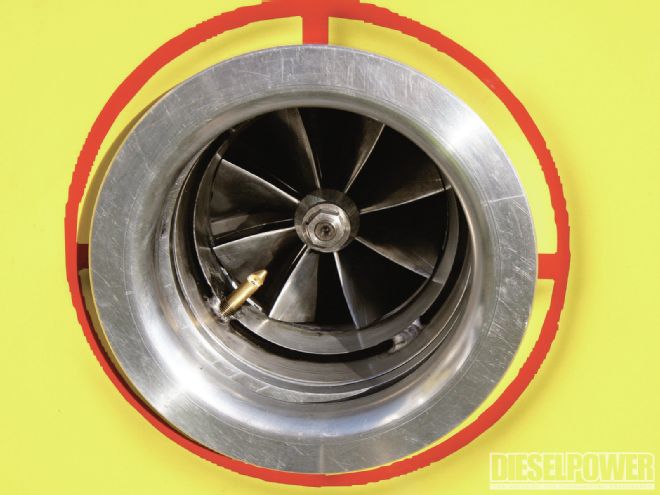When you’re climbing a hill with 15,000 pounds in tow, the last thing you want to see is a pegged exhaust gas temperature (EGT) gauge. Lifting off the throttle with tons of weight will result in lost momentum, and that speed will be hard to get back. That’s why many of our readers rely on foot-to-the-floor towing and control exhaust gas temperature by other means.

| 1105dp Water Injection Or Intercooler ford Superduty Front Three Quarter
Why Control EGT?
It may sound like a silly question, but really, why do we try to control our engine’s exhaust gas temperature? The simple answer here is, although there are hotter points during combustion (the diesel-fueled flame front from an injector can be many thousands of degrees), EGT is a good indicator of overall in-cylinder temperature. If that temperature becomes too hot, melted pistons, turbochargers, or valves can be the result. Plus, excessive EGT is wasted energy, which could have been used to move the piston. Put simply: Extreme EGT levels melt engine partsespecially during sustained conditions such as towing.
Air: Cooler In, Means Cooler Out
Depending on the ambient temperature, the air your diesel sucks into the air filter will be 60 to 100 degrees. It’s then compressed by a turbocharger, which pressurizes the air and also raises its temperature to 300 to 500 degrees. At that point, the boosted and heated air is ready to enter the engine. But there’s a catch. For every degree the air pushed into the engine’s intake is increased, there is a 1 degree increase in the exhaust gas temperature coming out of the engine. Therefore, it becomes advantageous to cool the intake air before it goes into the engine any way you can. This is why virtually all modern diesels come equipped from the factory with intercoolers.
What Is An Intercooler?
An intercooler (charge-air cooler, or CAC) is an air-to-air (or air-to-water on the 6.7L Power Stroke) heat exchanger that uses outside air as a cooling medium to reduce the intake air charge temperature from 300 to 500 degrees to around 150 degrees (50 to 100 for air-to-water) before it goes into the engine. The result is a big drop in EGT, and less stress on the turbocharger(s) and engine parts.
Hot-Rodded Towing
With today’s diesel tuners and programmers, a few hundred extra horsepower can be added with simple modifications, which can aid greatly in towingespecially when it comes to climbing grades. When increasing power for towing, the transmission and cooling system are usually the first weak links, but once those are addressed, it becomes time to worry about EGT readings.
Most programmers work by adding extra fuel to the engine, which will make more power but will also increase EGT to the point where it can become dangerous. To combat the excess fuel, the turbocharger is usually spun harder to create more boost and flow a greater amount of air. When this happens, the intercooler (which can become restrictive or lose its efficiency as boost rises) stops doing its job as well, and engine air intake temperature starts rising due to the loss of intercooler efficiency. When air intake temperatures rise, so does EGT. This is where water injection and aftermarket intercoolers come into play.
Reducing EGT with Water Injection
Injecting water into the air intake stream is one way of helping control EGT. If a truck is overfueled, water can help cool combustion and reduce EGT as it vaporizes and turns into steam. Water can also be injected between the turbo and the intercooler, as exit temperatures from the compressor can be as much as 500 degrees before the intercooler. Introducing cool water into the intake stream before the intercooler can lead to a greater temperature drop before the intercooler, and cooler intake air temperatures. On a truck that’s blowing black smoke while towing, the water can also be used to clean up the haze and save whatever is being towed from getting covered with soot. On an average overfueled truck that’s towing, look for a standard water injection kit to drop EGT by 100 to 200 degrees.
Reducing EGT With an Aftermarket Intercooler
When extra fuel is added to increase power, the turbocharger is often spun faster to increase flow (which increases boost pressure). There comes a point when the intercooler (especially on older diesels) becomes less and less efficient in cooling the air, and if it doesn’t flow enough hot air from the turbocharger, it will start to back up on the compressor-exit side of the tank. This will end up heating the air throughout the intercooler, and after a while, intake temperatures into the engine will rise considerably. From the factory, most diesels produce less than 20 psi of boost, so if you’re trying to cram 50 psi of air through an intercooler that was only designed to flow 20 psi efficiently, it may be time for an upgrade.
With an upgraded intercooler, expect a 100 to 200 degree drop in EGT while towingespecially if you are severely overboosting your stock unit.
SoWhich Is Better?
Well, it all depends on how your truck is set up. A truck that is overfueled with low boost levels will probably respond better to water injection, while a highly boosted truck will respond better to an intercooler. If you have too much boost and fuel, you probably need both, and if your EGT is still high after that, then it’s time to upgrade to a larger turbocharger (or multiple turbochargers). Both water injection and intercoolers have their pros and cons, but both of them get the job done if a little bump in engine efficiency is needed.
Pros and Cons
Water Injection
Pros: Inexpensive, can reduce EGT, reduces smoke levels, helps clean the combustion chamber, and a water-methanol mix can be run if extra power is desired (50 to 70 hp)
Cons: Tank must be refilled and controls are needed
Intercooler
Pros: Can reduce EGT, no parts to wear out, easy to install, can lower boost pressures (easier on turbochargers), and works at any load or speed
Cons: Expensive, sometimes leads to higher engine temperatures because it can reduce airflow through the radiator
What? No difference?
Recently, we tested a water kit and an aftermarket intercooler on an ’08 Ford 6.4L Power Stroke that had a tow tune installed, stock compound turbos, and made about 450 hp at the rear wheels. In acceleration testing with a 10,000-pound trailer, the Ford would hit an EGT of 1,350 degrees by 70 mph, so it was starting to get hot. Sounds like the perfect candidate for water or an intercooler, right? We tested both the water injection kit and an aftermarket intercooler on the truck, and neither one made any difference. How could this be?
It turns out the truck was running about 46 psi of boost on the tow tune, and since compound-turbo Fords can hit 40 psi at the stock power level, the intercooler wasn’t very far out of its efficiency range. The truck was also burning clean (no smoke), so the water didn’t have a chance to clean up any excess fuel with steam. The truck was simply running out of airflow from the turbochargersa problem that intercooling or low-pressure water injection was hard pressed to help. While high-pressure (1,000-psi) water injection can be used to lower temperatures in-cylinder, the amount of water that must be injected is tremendous, and not practical for towing. As it was, a set of larger turbochargers would be the next logical step if one wanted to further reduce EGT in an application such as this.
